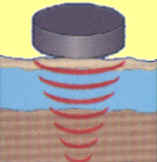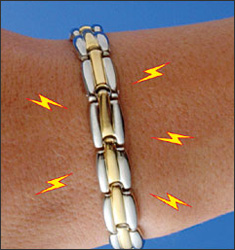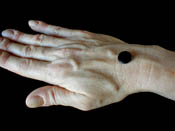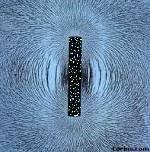
Team Research

FUNDING DECISION NEEDED!
STATIC MAGNET PAIN THERAPY
| Home | Introduction | Task | Process | Evaluation | Conclusion |
PROCESS DAY 1
 |
Team Research |
 |
Your committee will initially need to divide into three process teams of two students each. Research your topics thoroughly but efficiently, Each team will evaluate a different topic area. Quickly pair into three teams and begin the process.
| Team 1 Research. |  |
 |
Your team will evaluate the existing academic and industry research on static magnetic therapy. As you evaluate each item of research begin take notes to organize the facts about each trial or research claim. Facts may include ailments treated, length of treatment, number of patients, magnet size and strength etc. You may want to look for possible connections between the data, or think of alternative possible explanations for the study outcomes. You will also want to consider the credibility of source of the study in developing your conclusions.
Divide the following links between the two team members of team one. Individually read and evaluate the study abstracts. Try to leave at least 10 minutes at the period end to discuss your notes as a pair.
| Team 2 Mechanistic Claims: How Magnetic Therapy Works. |
 |
 |
Your team will organize and investigate the mechanistic claims of static magnet therapy. A mechanistic claim is the nuts and bolts explanation of the phenomena behind why something happens. Relativity theory provides a mechanistic theory of why moving charges create magnetic fields. Mechanistic theories attempt to provide a blueprint of alignments, conditions, speeds, etc necessary to cause a particular event to occur. You will be looking at mechanistic claims of why magnetic therapy works. Consider the claims against your own experience and knowledge of magnetism. Note the elements of each claim that seem reasonable and unreasonable based on your experience and understanding. Also consider the credentials and motivation of the researcher making the claim.
Divide the following links between the two members of team two. Individually read and evaluate the studies. Try to leave at least 10 minutes at the period end to discuss your notes as a pair.
|
Team 3 Interactions of Magnetic Fields with Human Tissue. |
 |
 |
Your team will consider the interaction of magnetic fields with of human tissue. You will compare static magnetic therapy to the magnetic exposure due to common non-therapeutic magnets in our homes, work-places and health care institutions. You will also consider the type and abundance of magnetic materials in human tissue. Consider the research and claims against your own experience and knowledge of magnetism.
Divide the following links between the two members of team 3. Individually read and evaluate the studies. Try to leave at least 10 minutes at the period end to discuss your notes as a pair.
Your presentation will be scored against the criteria found on the evaluation page.